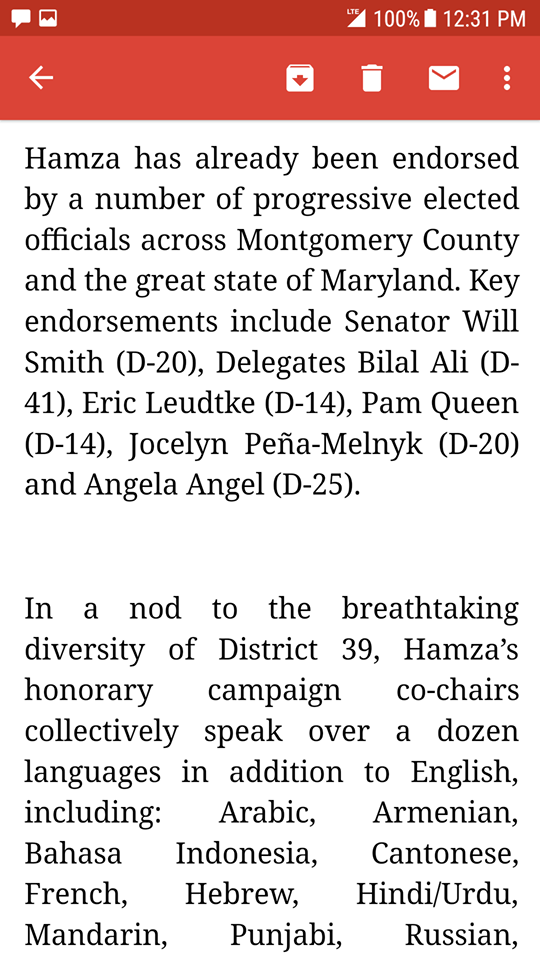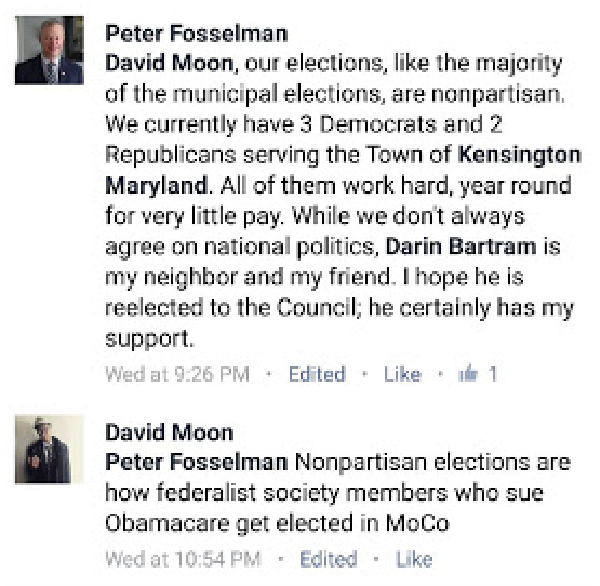Today, I am pleased to present a guest post by Del. Marc Korman about former Planning Board Chair Royce Hanson’s new book on the history of planning in Montgomery County.
Rumors abound that there could be more than 50 candidates running for the Montgomery County Council in the next election cycle (after attending the recent Montgomery County Democratic Party Spring ball, I think that could be an under-estimate). I would recommend that each of them dive into Suburb: Planning Politics and the Public Interest, by Royce Hanson.
Royce Hanson is a legendary figure in Montgomery County. He chaired the Planning Board from 1972 to 1980 and was brought back in as something of an elder statesman from 2006 to 2010 to clean-up improprieties fond related to development in Clarksburg. His most lauded accomplishment is the establishment of the Agricultural Reserve which covers about one-third of Montgomery County although he oversaw numerous sector and master plans during his two tenures. Mr. Hanson has had less success as a political candidate in the County.
Suburb is closely related to a series of speeches Mr. Hanson gave at the Planning Board Department in 2014 and 2015, which can be watched online and may be more accessible for some than the book. Hanson’s book—like the lectures—tells the story of planning in Montgomery County essentially from the establishment of the bicounty agencies Washington Suburban Sanitation Commission and Maryland-National Capital Park and Planning Commission (the Planning Board) in the 1910s virtually up until the present. Hanson sees County land use through three lenses.
First, land use decisions are usually the outcome of the back and forth between what he calls the “Miniature Republic”—homeowners, taxpayers–and the “Commercial Republic”—major land owners and developers. At different times and in different locations, the power rests more heavily with one than the other.
Second, he traces land use decisions through several political regimes in the County’s history, which will be of particular interest to many local readers: The [Blair] Lee regime dominated by an insider political machine; the builders and the bar regime in which land use attorneys controlled the planning process; the progressive regime that emerged from the new Executive form of government in the 1970s, which he views himself as a product of; and the current “pure political” regime which Hanson views as lacking a cohesive vision for County land use.
Third, Hanson sees ultimate planning decisions as the place where the logic of consequentiality—the more technical and planning-based logic of bureaucrats–meets the logic of appropriateness—the politician’s changes to satisfy certain parties and make planning decisions more palatable.
The book marches through a number of “case studies” beginning with the 1964 General Plan, known as Wedges and Corridors; reimagining Bethesda and Friendship Heights for Metro; the resurgence of Silver Spring; updating White Flint for the 21st century; development of corridor cities such as Gaithersburg, Rockville, Montgomery Village, and Germantown; the huge and scandalous errors with Clarksburg development; the creation of the Agricultural Reserve; and the growth policy regularly updated by the Planning Board and County Council and now called the Subdivision Staging Policy. Each of these chapters is rich with detail, but at times it feels as though you are just reading a series of facts and events as opposed to any type of analysis. There are insights about what political and planning compromises worked (and sometimes didn’t work) in specific locations in Montgomery County at particular times, but broader conclusions about planning and process are hard to discern.
Indeed, Hanson even recognizes this late in the book when he concedes that it “is hazardous to overgeneralize from the experience of Montgomery County”, although he goes on to say that examples, analogies, insights, and more can be drawn and applied elsewhere, which is true in the broad sense that another place could redevelop a suburban strip mall near transit, come up with transferable development rights, or target specific neighborhoods through sector plans. As someone more interested in the Montgomery County story, this approach helped focused on facts and events suited me fine but may be seen as a shortcoming to others. Indeed, while as I said I think this book is important to read for County Council candidates, I’m not sure who else besides them, other local elected officials, and committed local activists would really appreciate this book. I certainly did, but I’m in one of those relatively narrow buckets.
Hanson may have been torn between writing a history of Montgomery County planning politics and case studies that could potentially be used to teach planners anywhere and sometimes he did not find the balance he was looking for. Those interested in the history will want to know who the unnamed councilmembers were who voted against appointing Norman Christellar Planning Board Chair and planning students will probably want to know why the failed plan to build another Mall of America in Silver Spring is relevant to their studies. I, of course, understand why a pure Montgomery County history book was not written, as it would clearly have a small audience. It has also been pointed out to me that the history of the County’s actions over race are almost entirely omitted. I am sure others who lived through some of these planning efforts will note their own omissions.
Still, for you local history buffs there are plenty of interesting facts. For example, County Executives used to control some appointments to the Planning Board and, for a time under County Executive Kramer, they could revise plans before they went to the Council. Neil Potter devolved these powers back to the Council after defeating Kramer. Hanson is also open with his criticism of some local County players and even relies on Adam Pagnucco research in making his attacks. Former Councilwoman Idamae Garrott comes off as particularly responsive to the current mood of the best organized voters.
If you sit in lots of meetings about sector plans, dream about being on the County Council, or read blogs like this one, then this book is for you. It covers interesting history and can be a good reference regarding particular parts of the County. But for those not fitting that description, this book and its detailed history of Montgomery County land use may be more of a slog. For the right audience, this book can provide a useful baseline of how Montgomery County developed over the last century and why.






